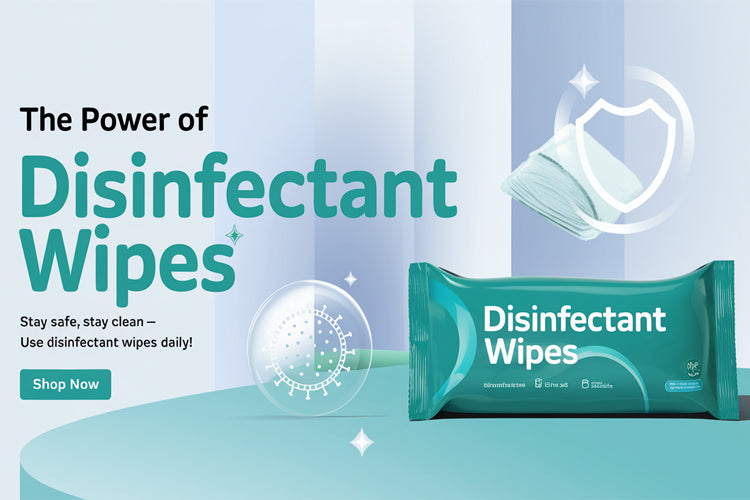المنشورات
-
More than paper and pens—stationery is a timeless companion.
More than paper and pens—stationery is a timeless companion.
That day has gone when stationery was just about basic pens and plain notebooks in a school bag. Today, stationery has evolved into a blend of functionality, creativity, and even self-expression. Be it a simple notebook, a stylish planner, or colorful sticky notes, stationery remains an essential part of daily life. Beyond being tools, these little items often inspire us, keep us organized, and add charm to our everyday routine.
Since the past, stationery has played a vital role in human communication and organization. From handwritten letters sealed with wax to modern designer diaries, stationery has always been a medium of expression. It not only helps us capture thoughts and ideas but also reflects personality and style. Whether it’s for students, professionals, or artists, stationery continues to hold timeless importance in boosting productivity and creativity.
Importance of Stationery:
Just as our mind needs clarity to function well, our work and studies need stationery to stay organized. A neat diary, a reliable pen, or a planner helps manage tasks efficiently. Stationery also adds value to education by making learning interactive and engaging. For professionals, it creates discipline in work, while for creative minds, it offers a canvas for imagination.
Benefits of Using Stationery:
Boosts Productivity: Planners and sticky notes keep tasks structured.
Encourages Creativity: Sketchbooks, colors, and journals spark new ideas.
Adds Personal Touch: Handwritten notes and letters carry emotional value.
Improves Organization: Files, folders, and labels keep things systematic.
Sustainable Choices: Eco-friendly stationery supports a greener planet.In short, stationery is more than just paper and pens—it’s a companion that makes our work, learning, and creativity more meaningful and enjoyable.

-
The Power of Disinfectant Wipes: How They Can Keep Your Home Clean and Safe
The Power of Disinfectant Wipes: How They Can Keep Your Home Clean and Safe
Disinfectant wipes have become an essential tool in maintaining cleanliness and hygiene within the home. Their convenience and effectiveness make them a popular choice for many households. Unlike traditional cleaning methods that often require multiple products and tools, disinfectant wipes offer a straightforward solution.
They are pre-moistened with cleaning agents that not only remove dirt and grime but also kill harmful pathogens. This dual action simplifies the cleaning process, allowing individuals to quickly address messes without the need for extensive preparation or cleanup. Moreover, the versatility of disinfectant wipes makes them suitable for various surfaces throughout the home.
From kitchen counters to bathroom fixtures, these wipes can be used on a multitude of materials, including stainless steel, plastic, and ceramic. This adaptability is particularly beneficial in high-traffic areas where germs tend to accumulate. By incorporating disinfectant wipes into regular cleaning routines, homeowners can ensure that their living spaces remain not only visually appealing but also hygienically safe.Key Takeaways
- Disinfectant wipes are powerful tools for keeping your home clean and safe
- Using disinfectant wipes is important for preventing illness and promoting safety in your home
- Choosing the right disinfectant wipes for your home is crucial for effective cleaning
- Tips for effectively using disinfectant wipes in your cleaning routine can help maximize their benefits
- Incorporating disinfectant wipes into your home cleaning routine can help maintain a healthy and safe living environment
How Disinfectant Wipes Can Help Prevent Illness and Promote Safety
The role of disinfectant wipes in preventing illness cannot be overstated, especially in today's health-conscious environment. Many common illnesses, such as colds and flu, are transmitted through surfaces that harbor viruses and bacteria. Disinfectant wipes effectively eliminate these pathogens, significantly reducing the risk of infection.
For instance, studies have shown that regularly disinfecting frequently touched surfaces—like doorknobs, light switches, and remote controls—can lower the incidence of illness in households. In addition to their germ-killing properties, disinfectant wipes contribute to a sense of safety and well-being among family members. Knowing that surfaces are regularly sanitized can alleviate concerns about exposure to harmful microorganisms.
This is particularly important for vulnerable populations, such as young children and the elderly, who may be more susceptible to infections. By fostering a clean environment, disinfectant wipes not only protect physical health but also enhance mental comfort within the home.
Choosing the Right Disinfectant Wipes for Your Home
Selecting the appropriate disinfectant wipes is crucial for maximizing their effectiveness and ensuring safety. When shopping for these products, it is essential to look for wipes that are EPA-approved, as this indicates they have been tested for efficacy against specific pathogens. Additionally, consumers should pay attention to the active ingredients in the wipes.
Common disinfectants include quaternary ammonium compounds and hydrogen peroxide, both of which are effective against a broad spectrum of germs. Another factor to consider is the surface compatibility of the wipes. Some formulations may be too harsh for delicate surfaces like wood or certain types of electronics.
Therefore, it is advisable to read labels carefully and choose wipes that are suitable for the intended use. Furthermore, opting for biodegradable or environmentally friendly options can align with personal values regarding sustainability while still providing effective cleaning solutions.Tips for Effectively Using Disinfectant Wipes in Your Cleaning Routine
Tip Description 1 Read the label for proper usage instructions 2 Use a fresh wipe for each surface to avoid cross-contamination 3 Allow the surface to remain wet for the recommended contact time 4 Dispose of used wipes properly 5 Store wipes in a sealed container to prevent drying out
To maximize the benefits of disinfectant wipes, it is important to use them correctly within your cleaning routine. One key tip is to ensure that surfaces remain wet with the disinfectant solution for the recommended contact time specified on the packaging. This duration is critical for effectively killing germs; if surfaces dry too quickly, the disinfecting action may be compromised.
Therefore, it may be beneficial to apply multiple wipes to larger areas or particularly dirty spots. Additionally, it is advisable to use a fresh wipe for each surface or area being cleaned to prevent cross-contamination. For example, when cleaning a kitchen counter followed by a bathroom sink, using separate wipes ensures that bacteria from one area do not transfer to another.
Finally, incorporating disinfectant wipes into a regular cleaning schedule—such as daily or weekly routines—can help maintain a consistently clean environment and reinforce good hygiene practices throughout the home. -
The Must-Have Cookware for Every Kitchen: A Beginner's Guide
The Must-Have Cookware for Every Kitchen: A Beginner's Guide
A well-equipped kitchen is the cornerstone of successful cooking, and having the right cookware is essential for both novice and experienced chefs alike. At the heart of any kitchen collection are a few fundamental pieces that serve a variety of cooking methods. A sturdy set of pots and pans, including a non-stick skillet, a stainless steel saucepan, and a heavy-bottomed stockpot, forms the foundation of this essential cookware.
Each piece plays a unique role: the non-stick skillet is perfect for frying eggs or pancakes, while the saucepan is ideal for simmering sauces or boiling pasta. The stockpot, on the other hand, is indispensable for making soups, stews, and large batches of food. In addition to pots and pans, baking sheets and roasting pans are crucial for those who enjoy baking or roasting meats and vegetables.
A good-quality baking sheet can be used for cookies, sheet cakes, or even roasting vegetables at high temperatures. A roasting pan, often equipped with a rack, allows for even cooking of larger cuts of meat, ensuring that they are juicy and flavorful. These essential pieces not only enhance cooking efficiency but also contribute to the overall versatility of your kitchen.Key Takeaways
- A beginner's kitchen should have essential cookware such as a skillet, saucepan, and stockpot.
- When building a cookware collection, consider investing in versatile and durable pieces that will last for years.
- Must-have kitchen tools for cooking success include a chef's knife, cutting board, and measuring cups and spoons.
- Building a functional kitchen with the right cookware involves choosing pieces that suit your cooking style and needs.
- Quality cookware is an investment that can enhance your cooking experience and make meal preparation more enjoyable.
The Beginner's Guide to Building a Cookware Collection
Starting a cookware collection can be an overwhelming task, especially for beginners who may not know where to begin. A practical approach is to prioritize versatility and quality over quantity. Investing in a few high-quality pieces that can serve multiple purposes is more beneficial than acquiring a large number of specialized items that may rarely be used.
For instance, a cast-iron skillet is not only excellent for frying but can also be used for baking cornbread or searing meats. Similarly, a Dutch oven can function as both a pot for soups and a baking dish for casseroles. As you build your collection, consider your cooking style and preferences.
If you enjoy preparing stir-fries or Asian cuisine, a wok may be an essential addition to your kitchen. Conversely, if you prefer baking, investing in quality bakeware such as cake pans and muffin tins will be advantageous. It’s also wise to gradually expand your collection based on your culinary interests; this way, you can avoid unnecessary purchases and focus on acquiring tools that will truly enhance your cooking experience.Must-Have Kitchen Tools for Cooking Success
Beyond basic cookware, certain kitchen tools can significantly elevate your cooking game. A reliable set of knives is paramount; a chef's knife, paring knife, and serrated knife cover most cutting tasks. A good knife not only makes food preparation easier but also enhances safety in the kitchen by allowing for precise cuts.
Additionally, investing in a cutting board made from wood or plastic can protect your countertops and prolong the life of your knives. Other indispensable tools include measuring cups and spoons, which ensure accuracy in recipes, and a reliable set of mixing bowls for ingredient preparation. A food thermometer is also crucial for achieving perfectly cooked meats and baked goods.
These tools may seem minor compared to larger cookware items, but they play a vital role in ensuring consistent results in the kitchen.Building a Functional Kitchen with the Right Cookware
Cookware Item Function Material Size Saucepan Heating liquids, making sauces Stainless steel, copper, non-stick 1-4 quarts Skillet Searing, frying, sautéing Cast iron, stainless steel, non-stick 8-12 inches Stockpot Making soups, boiling pasta Stainless steel, aluminum 8-12 quarts Baking Sheet Baking cookies, roasting vegetables Aluminum, stainless steel Various sizes Dutch Oven Braising, stewing, deep frying Cast iron, enameled cast iron 5-7 quarts
Creating a functional kitchen goes beyond merely acquiring cookware; it involves organizing and maintaining your collection effectively. Proper storage solutions are essential to keep your cookware in good condition and easily accessible. For instance, hanging pots and pans from a rack can save space while allowing for easy access during cooking.
Drawer dividers can help keep lids organized, preventing scratches and damage. Moreover, regular maintenance of your cookware is key to longevity. For example, cast iron skillets require seasoning to maintain their non-stick properties and prevent rusting.
Stainless steel pots should be cleaned promptly to avoid staining from food residues. By taking care of your cookware and organizing it thoughtfully, you can create an efficient cooking environment that inspires creativity and enjoyment in the kitchen.
-
Say Goodbye to Clutter: How Garbage Bags Can Transform Your Home Organization
Say Goodbye to Clutter: How Garbage Bags Can Transform Your Home Organization
Garbage bags are often viewed merely as a means to dispose of waste, but their utility extends far beyond that. One of the primary benefits of using garbage bags for home organization is their ability to provide a quick and efficient way to collect and sort items. Whether you are decluttering a room, organizing a closet, or preparing for a move, garbage bags can serve as an essential tool in your organizational arsenal.
They allow you to categorize items easily, making it simpler to decide what to keep, donate, or discard. This process not only streamlines your efforts but also helps create a more visually appealing and functional living space. Moreover, garbage bags come in various sizes and strengths, making them versatile for different tasks.
For instance, large contractor bags are ideal for bulky items like old furniture or yard waste, while smaller kitchen bags can be used for everyday clutter such as expired food or broken household items. This adaptability means that you can tackle any organizational challenge with the right type of bag at your disposal. Additionally, using garbage bags can foster a sense of accomplishment; seeing the contents of your home neatly contained and organized can motivate you to maintain that order over time.Key Takeaways
- Garbage bags can transform home organization by providing a versatile and affordable solution for decluttering and tidying up.
- Using garbage bags for home organization offers benefits such as flexibility, durability, and the ability to easily contain and transport items.
- Get creative with garbage bags by using them for decluttering tasks such as sorting and storing seasonal clothing, organizing toys, and creating makeshift storage solutions.
- When choosing garbage bags for home organization, consider factors such as size, strength, and special features like drawstrings or scented options.
- Incorporating garbage bags into your cleaning routine can simplify tasks such as tidying up, sorting and containing items for donation or disposal, and transporting items to different areas of the home.
Creative Ways to Use Garbage Bags for Decluttering
Beyond their conventional use, garbage bags can be employed in innovative ways to enhance your decluttering efforts. One creative approach is to designate specific bags for different categories of items. For example, you might use one bag for clothing donations, another for recycling paper products, and yet another for items that need to be thrown away.
This method not only simplifies the sorting process but also ensures that you are making responsible choices about what to do with your belongings. By visually separating these categories, you can more easily see the progress you are making in your decluttering journey. Another imaginative use of garbage bags is to create temporary storage solutions during a larger organizational project.
If you are tackling a particularly cluttered area, such as a garage or attic, consider using garbage bags to group similar items together before finding a permanent home for them. For instance, you could place all holiday decorations in one bag and all gardening tools in another. This technique allows you to clear space quickly while still keeping everything organized.
Once the area is decluttered, you can then take the time to sort through each bag and decide where everything should go.Tips for Choosing the Right Garbage Bags for Home Organization
Selecting the appropriate garbage bags is crucial for effective home organization. First and foremost, consider the size of the bags in relation to the tasks at hand. For smaller projects, such as cleaning out a closet or organizing a child's playroom, standard kitchen-sized bags may suffice.
However, for larger jobs like clearing out a basement or garage, opting for heavy-duty contractor bags will provide the durability needed to handle heavier items without tearing. Assessing the scale of your decluttering project will help you choose the right size and strength of garbage bag. Additionally, pay attention to the material of the garbage bags you select.
Some bags are designed with added features such as odor control or extra thickness for puncture resistance. If you are dealing with particularly messy items—like food waste or yard debris—choosing bags with these features can make your organization efforts more pleasant and efficient. Furthermore, consider eco-friendly options made from recycled materials if sustainability is important to you.
By selecting the right type of garbage bag tailored to your specific needs, you can enhance both the efficiency and effectiveness of your home organization efforts.
How Garbage Bags Can Simplify Your Cleaning Routine
Benefits of Garbage Bags Details 1. Containment Helps contain and organize trash 2. Odor Control Prevents unpleasant odors from spreading 3. Easy Disposal Facilitates easy disposal of waste 4. Cleanliness Keeps the surrounding area clean and tidy
Incorporating garbage bags into your cleaning routine can significantly simplify the process and make it more manageable. One effective strategy is to keep a few garbage bags handy in each room of your home. This way, whenever you notice clutter accumulating—be it in the living room, kitchen, or bedroom—you can quickly grab a bag and start collecting items that no longer belong there.
This proactive approach not only helps maintain cleanliness but also prevents clutter from building up over time. Additionally, using garbage bags during deep cleaning sessions can streamline your efforts. For example, when cleaning out a closet, you can use one bag for items to donate, another for trash, and yet another for items that need to be relocated elsewhere in the house.
This method allows you to tackle multiple tasks simultaneously without getting overwhelmed by the sheer volume of items needing attention. By integrating garbage bags into your cleaning routine, you create a more organized environment while also fostering habits that promote ongoing tidiness.
FAQs
What are the benefits of using garbage bags for home organization?
Garbage bags are versatile and can be used to declutter and organize various items in the home. They are affordable, durable, and come in a variety of sizes and strengths to accommodate different organizational needs.
What are some creative ways to use garbage bags for decluttering?
Garbage bags can be used to sort and store clothing, shoes, linens, toys, and other household items. They can also be used for seasonal storage, such as packing away winter clothes or holiday decorations. Additionally, garbage bags can be used for donation purposes, making it easy to gather items for charity.
What tips should I consider when choosing the right garbage bags for home organization?
When choosing garbage bags for home organization, consider the size and strength needed for the items being stored. For heavy or sharp items, opt for a thicker, more durable bag. Additionally, consider using clear bags for easy visibility of contents, or scented bags for items that may need odor control.
How can garbage bags simplify my cleaning routine?
Garbage bags can simplify the cleaning routine by providing an easy way to gather and dispose of clutter and unwanted items. They can also be used for organizing and storing items, making it easier to maintain a tidy and organized living space.
-
The Ultimate Guide to Diaper Sizes: Finding the Perfect Fit for Your Little One
The Ultimate Guide to Diaper Sizes: Finding the Perfect Fit for Your Little One
Diaper sizes can often be a source of confusion for new parents, as they vary significantly between brands and can be influenced by a baby's weight, age, and body shape. Generally, diaper sizes are categorized into several ranges, typically labeled as newborn, size 1, size 2, and so forth, up to size 6 or even larger in some brands. Each size is designed to accommodate a specific weight range, ensuring that the diaper fits snugly without being too tight or too loose.
For instance, a newborn diaper is usually intended for babies weighing up to 10 pounds, while size 1 may cater to those weighing between 8 to 14 pounds. Understanding these categories is crucial for parents who want to ensure their child is comfortable and dry. Many brands provide weight guidelines on their packaging, which can serve as a helpful reference point.
However, it is essential to remember that every baby is unique; some may need to transition between sizes sooner than others based on their growth patterns. Therefore, keeping an eye on your baby's weight and growth milestones can help you make informed decisions about when to switch sizes.Key Takeaways
- Understanding diaper sizes is crucial for finding the perfect fit for your baby.
- Choosing the right diaper size is important for preventing leaks and ensuring your baby's comfort.
- Finding the perfect fit for your little one is essential for preventing diaper rash and discomfort.
- Selecting the best diaper size for your baby's comfort involves considering their weight and age.
- Common mistakes to avoid when choosing diaper sizes include ignoring weight guidelines and not checking for proper fit.
How to Choose the Right Diaper Size for Your Baby
Choosing the right diaper size involves more than just looking at the weight range; it also requires consideration of your baby's individual needs and habits. For example, if your baby is on the higher end of the weight range for a particular size but has a slim build, you might find that a smaller size fits better. Conversely, a baby who is heavier but has a rounder shape may require a larger size for comfort.
It’s advisable to try different brands and styles, as each may fit differently even within the same size category. Additionally, observing your baby's behavior can provide valuable insights into whether the current diaper size is appropriate. If you notice frequent leaks or if the diaper appears overly tight around the waist or thighs, it may be time to consider moving up a size.
On the other hand, if the diaper seems too loose and saggy, it could indicate that you need to go down a size. Regularly checking the fit and adjusting as necessary will help ensure that your baby remains comfortable and dry throughout the day.The Importance of Finding the Perfect Fit for Your Little One
Finding the perfect fit in diapers is not merely a matter of comfort; it also plays a significant role in your baby's overall health and well-being. A well-fitting diaper helps prevent leaks, which can lead to skin irritation or diaper rash. Babies have sensitive skin that can easily react to moisture and friction, making it essential to choose a diaper that provides adequate coverage without being restrictive.
A proper fit allows for freedom of movement, which is crucial as your baby begins to crawl and explore their surroundings. Moreover, a good fit can contribute to better sleep quality for both the baby and the parents. Diapers that fit well are less likely to cause discomfort during sleep, reducing the chances of waking up due to leaks or chafing.
This can lead to longer stretches of uninterrupted sleep for your little one, which is beneficial for their growth and development. Therefore, investing time in finding the right diaper size is an important step in ensuring your baby's comfort and health.
Tips for Selecting the Best Diaper Size for Your Baby's Comfort
Diaper Size Baby's Weight (lbs) Age Range Newborn Up to 10 lbs Up to 1 month Size 1 8-14 lbs 1-2 months Size 2 12-18 lbs 2-6 months Size 3 16-28 lbs 5-24 months Size 4 22-37 lbs 18-36 months Size 5 27+ lbs Over 3 years
When selecting the best diaper size for your baby, there are several practical tips that can help streamline the process. First, always refer to the manufacturer's sizing chart before making a purchase. These charts typically provide detailed information about weight ranges and may also include additional guidance on fit based on your baby's age or developmental stage.
It’s wise to keep in mind that some brands may run larger or smaller than others, so trying out different brands can be beneficial. Another useful tip is to consider purchasing diapers in bulk once you find a brand and size that works well for your baby. This not only saves money but also ensures that you have an adequate supply on hand as your baby grows.
Additionally, many retailers offer trial packs or smaller quantities of various sizes, allowing you to test different options without committing to a large purchase. Keeping an eye on sales and promotions can also help you stock up on your preferred diapers at a lower cost.Common Mistakes to Avoid When Choosing Diaper Sizes for Your Baby
One common mistake parents make when choosing diaper sizes is relying solely on age as an indicator of size. While age can provide some context, it is not always an accurate measure of what size will fit best. Babies grow at different rates; therefore, focusing on weight and fit is far more reliable than simply following age guidelines.
Another frequent error is not checking the fit regularly as babies grow quickly during their first year. What fits well one month may become too tight or loose just weeks later. Additionally, many parents overlook the importance of trying different brands before settling on one.
Each brand has its unique design and fit characteristics; what works for one baby may not work for another. It’s essential to experiment with various options to find the best match for your child's body type and activity level. Lastly, some parents may hesitate to switch sizes even when they notice signs of discomfort or leaks; being proactive about adjusting diaper sizes can prevent unnecessary issues and keep your baby happy and comfortable.












